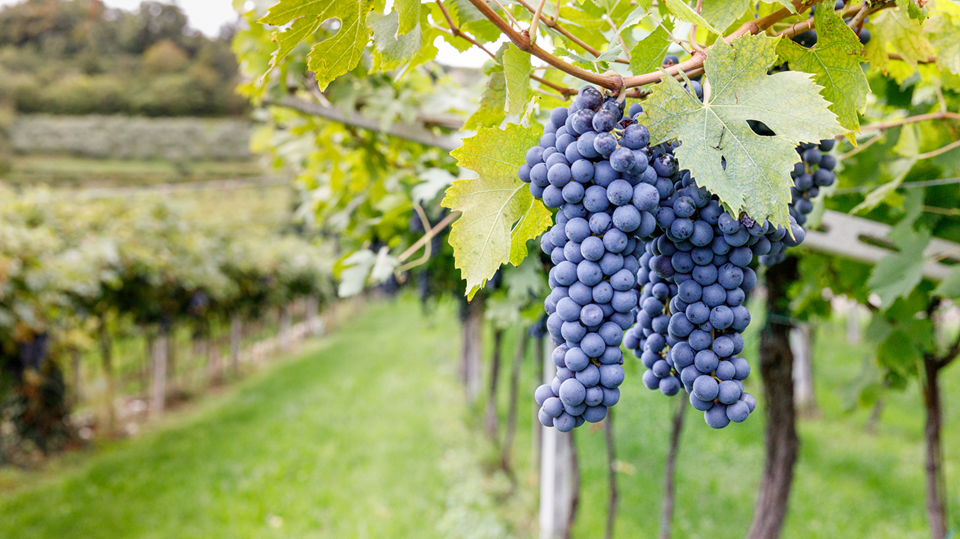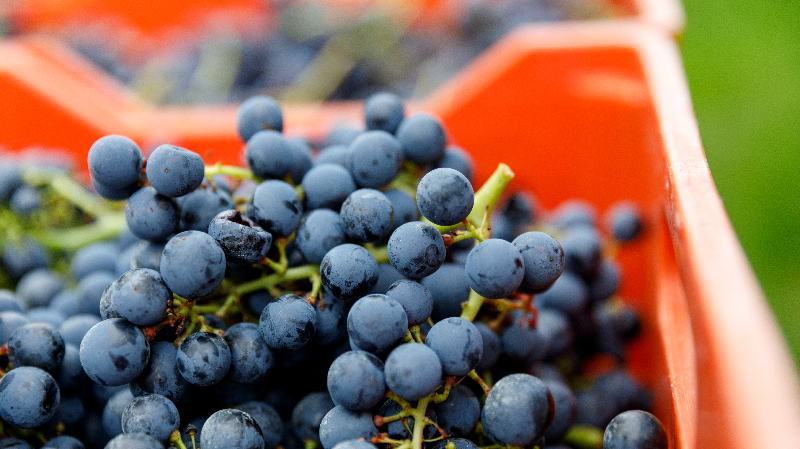Grape Varieties and Blends of Amarone and Valpolicella Wines – Cesari

Guide to the grape varieties and blends behind Amarone and Valpolicella wines: discover the grapes and secrets that make these renowned Veneto wines so unique
Valpolicella is one of Italy’s most celebrated wine regions, located in Veneto, just north of Verona. This area is known for producing prestigious red wines, including Valpolicella Classico, Ripasso, Amarone, and Recioto—each with its own distinctive aromatic profile and winemaking method.
Among them, Amarone della Valpolicella stands out as one of the most acclaimed Italian wines worldwide, thanks to its complex structure and the traditional appassimento process. The richness of this winemaking heritage is largely due to the native grape varieties used in the traditional blends of the region.
The Grapes Behind Amarone and Valpolicella Wines
Corvina: the primary variety
Corvina is the dominant grape in Valpolicella wines and the backbone of Amarone blends. It provides structure, aging potential, and a signature aromatic profile, with notes of cherry, red berries, and subtle spice. Its thick skin makes it especially well-suited for the appassimento process, producing full-bodied and long-lived wines. At Cesari, we exclusively use Corvina Veronese to express the essence of our terroir fully.
Corvinone: structure and intensity
Often used as an alternative to Corvina, Corvinone enhances both the structure and aromatic complexity of the wines. It brings notes of ripe fruit, spices, and balsamic hints, enriching the overall bouquet of Valpolicella wines—particularly Amarone.
Rondinella: color and softness
Rondinella contributes softness and color to Valpolicella wines. Though it plays a secondary role compared to Corvina and Corvinone, its resistance to disease and adaptability to the drying process (appassimento) make it a valuable component of the traditional blend.
Molinara and lesser-known varieties
Once a key element in Valpolicella blends, Molinara now plays a more limited role, though it is still used to provide acidity and freshness. Other minor varieties, such as Oseleta and Croatina, may be included in small percentages to add aromatic nuances and depth to the wines.
The Drying Process and Winemaking Methods
Appassimento: the secret of Amarone
The appassimento method is a trademark of Amarone and Recioto della Valpolicella. Grapes are dried for several months in well-ventilated drying lofts, losing a significant portion of their water content.
The Cesari Grape Drying Loft, or Fruttaio, is one of the highlights of our Fumane estate. Every harvest, over 55,000 crates of hand-selected grapes are carefully dried for about three months under controlled humidity and temperature conditions before continuing their journey in the cellar. This process concentrates sugars and aromas, giving the wines remarkable richness and structure.

Differences Between Amarone and Ripasso
Amarone della Valpolicella is a dry, powerful, and full-bodied wine made exclusively from dried grapes. Valpolicella Ripasso, on the other hand, is produced by refermenting Valpolicella Classico on the skins of Amarone, resulting in a wine with greater body and complexity, while maintaining a more approachable style.
The Role of Blends in Differentiating the Wines
Valpolicella Classico
Fresh and fruit-forward, Valpolicella Classico features a blend dominated by Corvina and Rondinella, with small percentages of other varieties. It’s a young, versatile wine ideal for immediate enjoyment.
Valpolicella Ripasso
Sharing the same grape blend as Valpolicella Classico, Ripasso undergoes refermentation on Amarone pomace, gaining added structure, smoothness, and aromatic depth.
Amarone della Valpolicella
Amarone’s blend is primarily composed of Corvina and Rondinella, with the optional inclusion of Corvinone and other minor grapes. This combination delivers full body, velvety tannins, and exceptional ageing potential.
Recioto della Valpolicella
Recioto shares the same blend as Amarone, but fermentation is halted early to retain natural sweetness, resulting in an intense, smooth dessert wine—perfect with chocolate-based desserts or blue cheeses.
Conclusion: The Art of the Blend in Valpolicella
The blend of Valpolicella wines is key to their structure and aromatic identity. The skilled combination of Corvina, Corvinone, Rondinella, and other minor varieties reflects a tradition passed down through generations, preserving the deep connection between the land and its iconic wines.
Thanks to a balance between innovation and respect for traditional methods, Valpolicella remains one of the most admired wine regions in the world—a legacy that Cesari continues to interpret with authenticity and a contemporary vision.
Come visit us for a tasting and explore the full range of our wines—each one an expression of this truly unique region.
